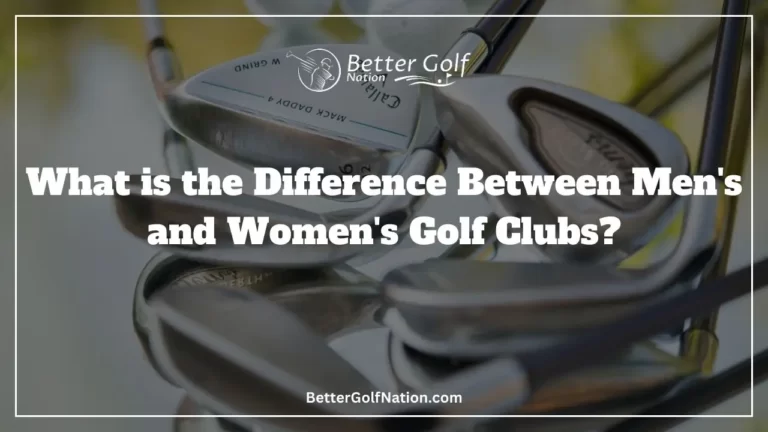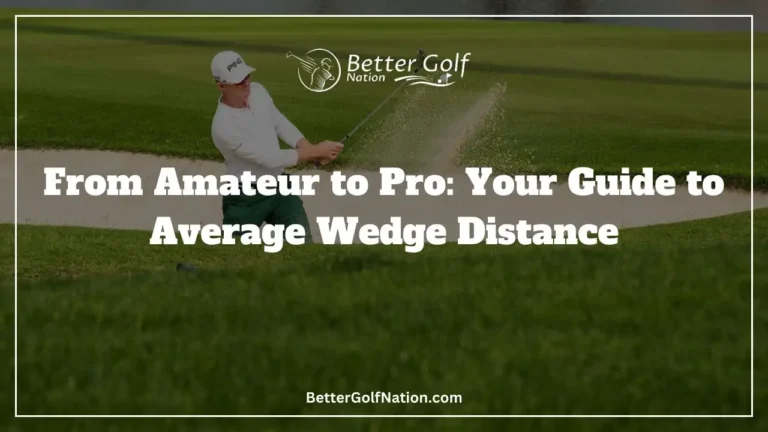The Battle of the Wedges: 54 vs. 56 Degree Wedge
- Last updated on February 9, 2024
- Toni Benedito
- Golf Equipment & Gear, Blog
While both the 54- and 56-degree wedges offer similar lofts, the differences lie in their bounce and performance. A 54-degree wedge, which offers a flatter trajectory and less backspin, is typically more suitable for experienced golfers wanting precise control. In contrast, beginners or those seeking to improve their short game often prefer a 56-degree wedge. It provides a higher trajectory and more backspin, offering extra carry for longer bunker shots or pitches from rough areas.

Key Takeaways
- Loft and Trajectory: A 54-degree wedge offers a flatter trajectory with less backspin, ideal for precise control. In contrast, a 56-degree wedge provides a higher trajectory and more backspin, suitable for beginners or those seeking extra carry distance.
- Bounce Considerations: Bounce, influencing turf interaction, differs between the two wedges. A higher bounce on a 56-degree wedge prevents digging, making it suitable for softer surfaces, while a 54-degree wedge with moderate bounce suits experienced golfers aiming for precision around greens.
- Versatility of 54-Degree Wedge: The 54-degree wedge proves versatile, excelling in various scenarios like short approaches, chip shots, and bunker play. Its moderate bounce allows for easy maneuvering under the ball, making it a valuable addition to a golfer’s set.
- Optimal Use of 56-Degree Wedge: The 56-degree wedge shines in specific situations, such as approaches from 70–80 yards, providing height and spin for soft landings. It excels in bunkers, elevating the ball over lips, but golfers should consider bounce to avoid potential issues like chunks or thin shots.
- Choosing the Right Wedge: Selecting between a 54-degree and 56-degree wedge involves personal preferences, playing style, and shot requirements. Consider factors like swing speed, ball spin rate, and course conditions. Experimentation and understanding your own game are crucial for making an informed decision.
Introduction
One of the most important aspects of golf is wedge play. Wedges are used for short shots around the green and can make or break a golfer’s score.
There are many wedge options available, and each has its unique characteristics that can affect golf wedge performance. Two popular options for golfers are 54- and 56-degree wedges.
While these two clubs may seem similar, there are some key differences that every golfer should consider when choosing their wedge set. Golfers who understand the nuances of these clubs will be better equipped to choose the right wedge for their game.
One of the main differences between a 54-degree wedge and a 56-degree wedge is loft. The loft of a club refers to the angle between the face of the club and its shaft.
The higher the loft, the more height and spin a shot will have. While both 54- and 56-degree wedges have similar lofts, there is still enough difference to affect golf wedge play.
Another important factor in choosing between a 54-degree wedge and a 56-degree wedge is bounce. Bounce refers to how much or little the sole (bottom) of the club interacts with turf or sand in contact with the ball and ground surface during swing motion; more bounce means less digging at impact, while less bounce means more digging at impact.
Enjoying this article? Read more:
Check out this video below from Golf Sidekick‘s YouTube channel:
A higher bounce angle can help prevent clubheads from digging into the ground, which can cause divots in grass or sand traps around greens, while a lower bounce angle can be useful for softer surfaces such as fluffy fairway sand traps where you don’t want any resistance in your swing motion. When it comes to choosing between these two wedges, it depends on your personal preferences as well as your skill level.
For more experienced golfers looking for precision around greens, a 54-degree wedge might be the right one. It provides a flatter trajectory and less backspin, making it ideal for those who want to control their shots more precisely.
On the other hand, a 56-degree wedge may be better suited for golfers who are just starting out or looking to improve their short game. It provides a higher trajectory and more backspin, which can help make up for any mistakes made during the swing.
Additionally, it can be useful for longer bunker shots or pitches from rough areas around greens where you need that extra carry distance. Choosing between a 54-degree wedge and a 56-degree wedge really depends on your individual needs as a golfer.
While both clubs have similar lofts, some key differences in bounce and performance should be considered when selecting the right wedge for your game. So whether you’re playing on one of the top courses in the world or just practicing your swing with training aids at home, take some time to research and experiment with different wedges to find the one that works best for you!
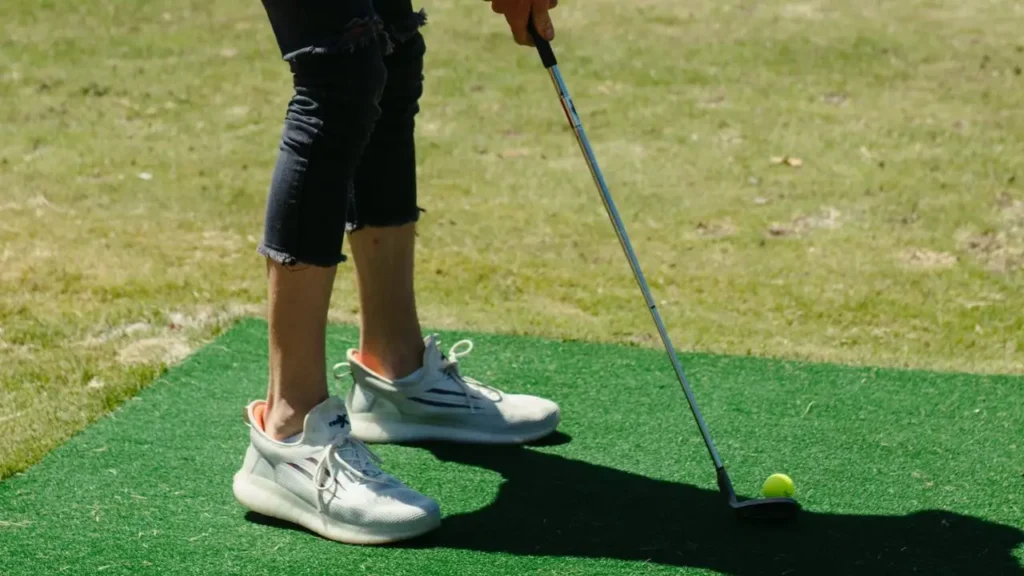
Understanding Golf Wedges
Wedges are a crucial part of any golfer’s arsenal, and understanding their use is essential to improving your game. Golf wedges are designed specifically for short-range shots that require height and control.
They come in four different types: pitching wedge, gap wedge, sand wedge, and lob wedge. The pitching wedge is the most commonly used in a golfer’s bag and has the highest loft angle of any iron.
This club is used for approach shots from distances between 120 and 140 yards. It provides excellent control and accuracy, making it an ideal choice for golfers looking to get on the green in as few strokes as possible.
The gap wedge fills the distance gap between a pitching wedge and a sand wedge. It has a slightly shorter shaft length than other irons but has more loft than a pitching wedge.
This club is typically used for shots from 90–110 yards away from the green. The sand wedge is one of the most important clubs any golfer can have in their bag.
It features a high loft angle that helps players get out of bunkers with ease. The bounce angle on this club also makes it easier to hit on soft ground or rough terrain.
"Wedges are essential for short-range precision in golf. From pitching wedges for 120-140 yards to lob wedges for obstacles at 60 yards, choosing the right wedge involves factors like course conditions, playing style, and personal preference. Understanding golf wedges is crucial for game improvement, focusing on performance, accessories, and adaptability to diverse challenges.
There’s the lob wedge—this club has the highest loft angle among all wedges available today! It’s perfect for getting over obstacles like trees or other hazards when approaching greens from around 60 yards out.
When it comes to choosing wedges, selecting the right one depends on several factors, such as course conditions, playing style, skill level, and personal preference! Also, note that golfers should focus on having enough variety amongst their clubs so they can have flexibility when playing different courses or adjusting their swing depending upon factors such as wind speed or course difficulty level!
Understanding golf wedges is critical to improving your golf game! You need to select the right wedges by focusing not just on performance but also on accessories such as degree comparison, golf wedge loft, golf wedge selection, and trajectory!
Additionally, pay attention to divots and other course conditions to determine the type of club that will best suit each shot. Overall, having a well-rounded set of wedges in your bag is essential for any golfer who wants to take their game to the next level!
Enjoying this article? Read more:

54 vs 56 Degree Wedge: The Basics
The 54-degree vs. 56-degree wedge debate has been raging on for years now, and the truth is that there is no simple answer to this question. However, before we delve into the nitty-gritty details of both wedges, let’s first discuss what golf wedges are and why they are so essential to a golfer’s game. Golf wedges are specialized irons designed for short-game distance control.
They come in a range of lofts, each with its own purpose and ideal usage scenario. The wedge set typically includes pitching wedges, sand wedges, lob wedges, and gap wedges.
Each golf wedge serves a different function and adds versatility to your bag. Now let’s get back to comparing 54-degree vs. 56-degree wedge basics.
When it comes to choosing the right wedge for your game, you need to consider several factors, such as swing speed, ball spin rate, playing conditions (courses), divots you make when hitting the ball with different irons or clubs (a wedge selector tool may help), sand wedge degree, or accessories used during play.
The average golfer typically uses a pitching wedge as their go-to club for approach shots from around 100–130 yards out, while using sand wedges if they find themselves in bunkers or challenging lies around greens.
"The 54-degree vs. 56-degree wedge debate is ongoing, and choosing between them involves considering factors like swing speed and playing conditions. Opting for a higher-lofted 56-degree wedge can enhance versatility in tight situations, emphasizing the impact of the right wedge on overall game performance."
However, when you’re dealing with tight lies or need extra spin control over short distances (around 50–80 yards), then lob wedges are ideal options that can help improve your short-game skills. When it comes down to choosing between a 54-degree and 56-degree golf wedge based on loft degree comparison alone, it may limit your options, but knowing which one will suit your needs best will keep things interesting on the course!
If you’re looking to add more versatility and options in tight situations that require precision shot-making capability beyond what most of us have in our skill sets, then going with a higher-lofted 56-degree wedge may be the best choice. Overall, choosing the right wedge can make all the difference in your game.
Sand wedge selection is a critical decision that could help improve your performance, but don’t limit yourself by only comparing 54- and 56-degree wedges! Remember to evaluate your short-game distance control, sand play habits, and course conditions before making a final decision on which golf wedge will suit you best.

When to Use a 54-Degree Wedge
The 54-degree wedge is a versatile club that can be used in a variety of situations.
It is a great option for approach shots where you need to hit the ball high and stop it quickly on the green. It can also be used for shorter-pitch shots around the green when you need to fly the ball over an obstacle or rough terrain.
One of the main advantages of using a 54-degree wedge is its versatility. It can be used for short approach shots from the fairway, chip shots around the green, or even bunker shots.
The bounce on this club is typically moderate, which allows you to easily slide it under the ball in any lie. If you have a gap wedge in your set that has a loft between your pitching and sand wedges, then using a 54-degree wedge makes sense because it will help to fill that gap.
This will provide more options around the green and improve your golf wedge play. When it comes to distance control, using a 54-degree wedge requires precision and skill because it has less loft than other wedges like sand wedges or lob wedges.
However, once you master its trajectory and distance control, you’ll be able to use this club effectively in various situations. If you’re looking for a wedge that will provide versatility and fill any gap between your other clubs, then go with a 54-degree wedge.
This club will give you more options around the greens and allow for better golf wedge performance overall. However, mastering its use requires practice, so take time to develop your skills with this club before relying too heavily on it during rounds.
Enjoying this article? Read more:
Check out this video below from Golf Sidekick EXTRAS‘s YouTube channel:
When to Use a 56-Degree Wedge
Let’s talk about the 56-degree wedge.
As I mentioned earlier, this is one of the most versatile clubs in your golf bag. But when should you use it?
Well, the answer mostly depends on the distance between you and the hole. If you’re about 70–80 yards from the green and there’s no obstacle in front of you, then this is an ideal situation to use your 56-degree wedge.
It will provide enough height and carry for your ball to land softly on the green with enough spin to stop it quickly. This is especially useful if you need to get your ball over a bunker or water hazard.
Another great time to use a 56-degree wedge is in a bunker. If there’s not much sand between your ball and the lip of the bunker, then this club can help elevate your ball up and over that lip without sacrificing too much distance.
However, if you have a lot of green to work with, then maybe going down to a lower-lofted club might be better for you. The extra loft can cause your shot to land short or stop suddenly after landing on greens with minimal slope.
I want to mention that bounce plays an important role in using this club effectively. If you have too little bounce on this club (less than 10 degrees), then it could lead to chunks or thin shots that could end up far from where they were intended.
Choosing the right golf wedge can make a difference in improving your game. Make sure that you incorporate both a good sand wedge selection as well as proper wedge set-up and rotation into your practice routines. So always compare wedges side by side before making such an important investment into clubs that are critical for golf wedge performance; whether it be comparing sand wedge degree differences between two models or deciding between different bounces and lofts available within a single model, every detail can have a significant impact on your golf wedge play.
Enjoying this article? Read more:
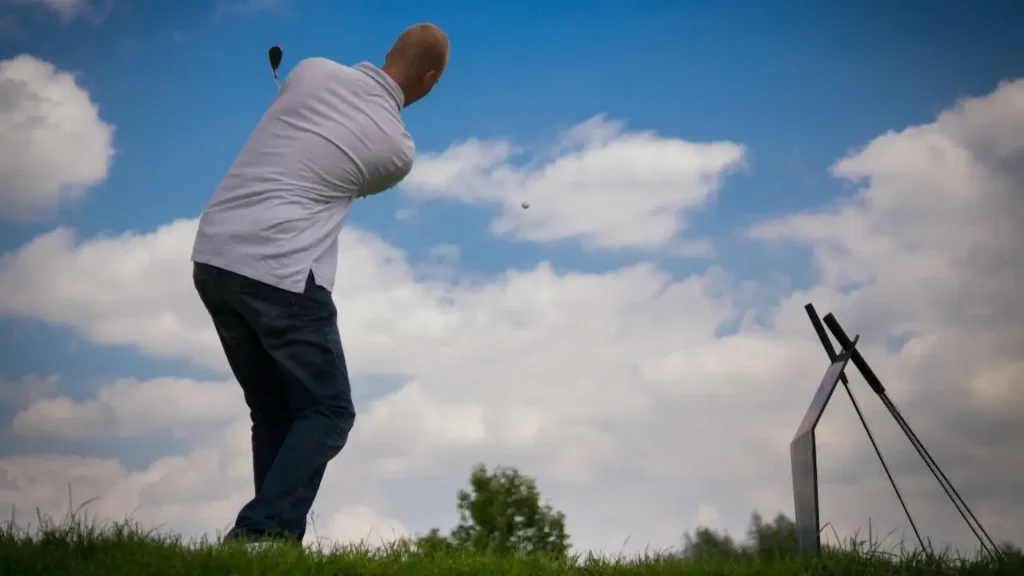
Comparing 54 vs 56 Degree Wedge
Let’s start by comparing the loft angles of these two golf wedges. The 54-degree wedge has a lower loft angle compared to the 56-degree wedge, which means that it is suitable for longer shots.
It is ideal if you need to hit the ball from 60 to 80 yards away from the green and have a full swing. In contrast, a higher loft angle on the 56-degree wedge makes it more suitable for shorter distances.
You can use this club when you are within 30–50 yards of the green and want to achieve a soft landing with better control. Now, let’s talk about how these two clubs perform in different situations and conditions on the course.
In general, both wedges are great options for hitting pitch shots around the green or out of bunkers. However, you should select your wedge carefully based on your personal preferences and skill level.
The use of wedges varies depending on different players’ styles and techniques; some prefer more control over distance, while others prioritize short-game distance control over everything else. Depending on your playstyle, you may find one club more beneficial than another.
When it comes to divots on courses, both wedges have similar performance due to their similar bounce angles. A higher bounce angle can help golfers who tend to dig into sand or grass while also providing improved versatility when hitting tight lies.
Whether you choose a 54-degree or a 56-degree wedge comes down to personal preference based on your playing style and needs around the course. Remember that choosing the right wedge is just as important as selecting other clubs in your bag; consider using tools like a sand wedge selector tool or consulting with professionals to make sure that you get better results with each shot during gameplay!
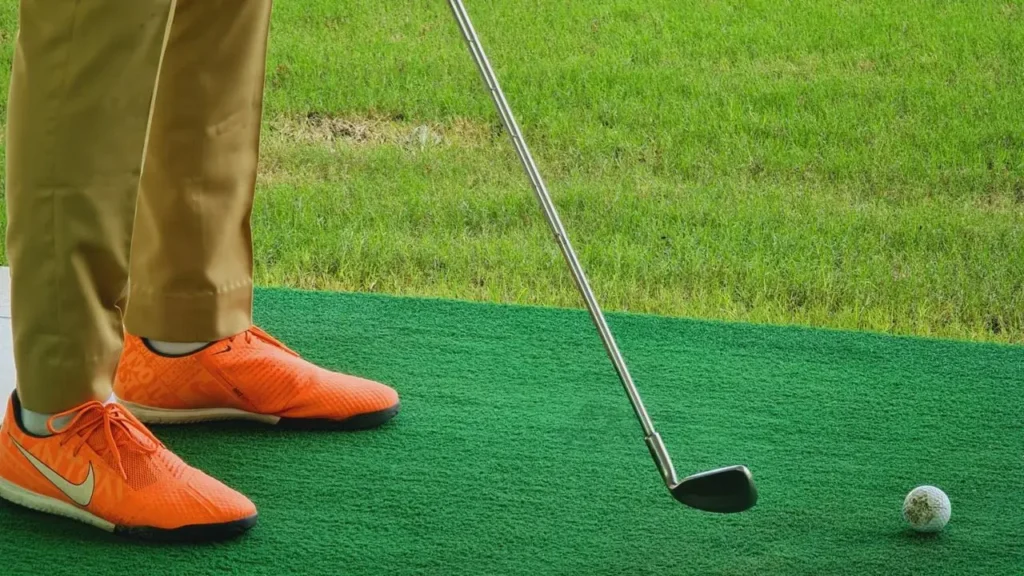
Enjoying this article? Read more:
Check out this video below from Golf Sidekick EXTRAS‘s YouTube channel:
Choosing the Right Wedge for Your Game
It’s vital to have a suitable wedge in your bag to improve your golf game. The wedge is one of the most versatile clubs in your bag, and choosing the right one is crucial to performing well on the course. A general problem many golfers face is not selecting the right wedge for their game.
So, how can you choose the right wedge for your game?
Firstly, you need to consider your playing style and skill level before settling on a particular club. The 54-degree vs. 56-degree wedge debate is just one of many factors that influence what type of club you choose. Consider other wedge options, like sand wedges or gap wedges, that might help in specific situations.
The next factor to consider is what type of shot you’re aiming for—control or distance? If you’re looking for control, then it’s best to go for a higher-lofted club like a 58-degree lob wedge. On the other hand, if you want more distance with your shots, go for lower-lofted clubs.
Another factor to consider when choosing the best wedge is choosing one with appropriate loft angles. Golfers need to ensure they have an adequate range of wedges that cover different control options over different distances so that they are prepared for any situation on the course.
Make use of technology and tools such as a golf wedge selector tool that provides powerful insight into their swing styles by focusing on factors such as swing tempo and angle of attack, enabling them to work out which type and degree of golf club will maximize their performance.
Choosing the right wedge requires careful consideration based on personal style development and technique improvement goals, along with access to appropriate accessories such as training aids or video analysis tools that can assist in optimizing performance levels while developing the swing consistency necessary when using these critical clubs during playtime!
Enjoying this article? Read more:

Improving Your Game with the Right Wedge
Of all the clubs in your bag, wedges are perhaps the most important when it comes to fine-tuning your short-game distance control. As any experienced golfer knows, using the correct wedge can make all the difference in executing a successful shot.
But how do you choose which one to use? In this section, I will offer my opinion on how to select the right wedge for improving your game.
Firstly, it’s important to note that not all wedge sets are created equal. It’s easy for golfers to get caught up in buying matching wedges without considering whether they are suited to their game.
When you’re looking at purchasing a new set of wedges, consider opting for a gap wedge and a sand wedge that complement your iron set. This will help ensure that you have the necessary coverage and don’t have too large or too small gaps between clubs.
Once you’ve decided on your wedge set, it’s time to focus on golf wedge performance and play. The trajectory of each club is just as important as distance, if not more so, when it comes to improving your short game.
"Opt for wedges that complement your iron set, ensuring proper coverage. Pay attention to loft angles; a 54-degree club offers lower trajectory, while a 56-degree suits those seeking height. Experiment to find the wedge that balances distance, trajectory, and consistency for improved short-game performance."
A 54-degree club will generally fly lower than a 56-degree club because of its lower loft angle, meaning it’s useful in situations where you need less height on your shots. When comparing 54-degree vs. 56-degree wedges for performance reasons, keep in mind that golfers tend to create different types of divots depending on which club they use.
This is because each golfer’s swing is unique and may be better suited to certain clubs than others. However, most average golfers who struggle with consistency should opt for a higher-lofted sand wedge, like the 56-degree option.
Ultimately, using the correct golf wedge choice can improve not only your score but also increase confidence in approaching approach shots closer to greens or hazards. Don’t be afraid to experiment with different wedge options until you find the right one for your game.
Remember that selecting the right wedge is about finding a balance between distance, trajectory, and consistency. If you’re serious about improving your short game, it’s time to start paying attention to the details of your wedge play.
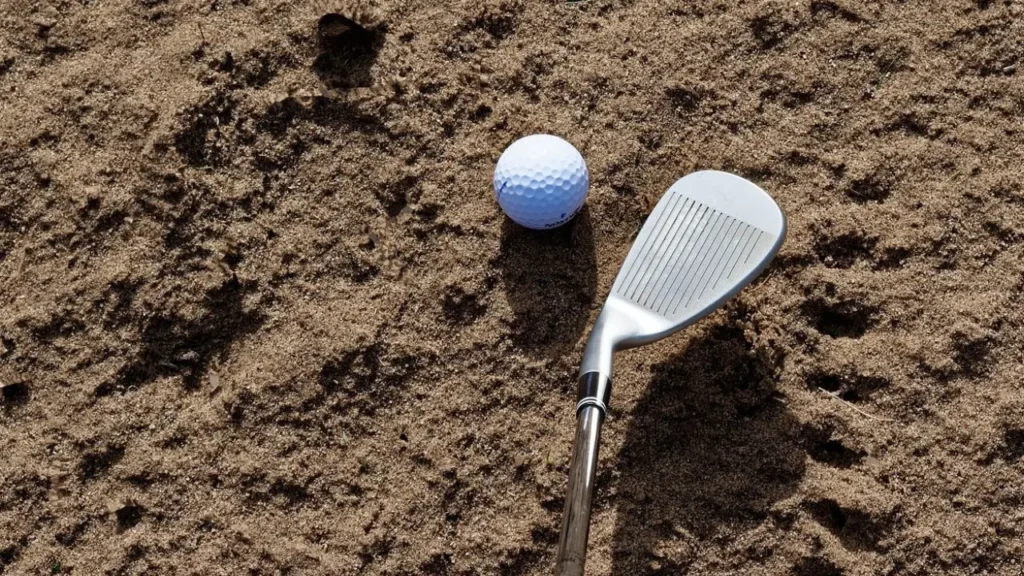
Conclusion
Choosing between a 54-degree wedge and a 56-degree wedge can be a daunting task for any golfer.
Both wedges have their advantages and disadvantages, and the decision ultimately comes down to personal preference and playing style. When selecting your wedge set, be sure to consider the types of shots you typically encounter on the course.
If you frequently face tough bunker shots or need more control on shorter approach shots, then a 56-degree wedge may be a better option for you. On the other hand, if you need more versatility in your short-game distance control or prefer a lower trajectory on your pitch shots, then a 54-degree wedge may be the way to go.
It’s also important to note that while wedges are vital for any golfer’s game, they can only do so much without proper technique and training aids. Be sure to work on your swing and short-game distance control with both irons and wedges to truly improve your game.
Don’t forget about accessories like training aids or other tools that can help take your game up a notch. These tools can help with sand wedge selection, bounce control, trajectory consistency, and other aspects of golf wedge use that are critical for consistent performance on the course.
Overall, selecting the right golf wedge loft is crucial for anyone looking to improve their short-game performance. While there is no one-size-fits-all answer when it comes to the 54 vs. 56-degree wedge debate, taking into account various factors such as shot type, swing style, and personal preferences will help ensure that you select the best possible option for you!
Share this Post
Toni Benedito
Keep Reading
Follow Us
Recent Posts

How Do Pro Golfers Get Paid? The Business of Golf
Professional golfers get paid both before and after tournaments. Before a tournament, they receive appearance fees, sometimes exceeding $1 million, to attract top players. After the tournament, earnings depend on their placement, with the PGA

How Much Do Golf Players And Pros Make? You Won’t Believe It!
Professional golfers earn substantial incomes through tournament winnings, sponsorship deals, and endorsements. Top players on the PGA Tour can make millions annually, with significant earnings from prize money and lucrative brand partnerships. For example, Rory

The Shocking Cost: How Much Does It Cost to Fly with Golf Clubs?
Flying with golf clubs can be a hassle, but it’s worth it for avid golfers. Costs vary by airline, ranging from $30 to $150 per way. Southwest Airlines offers a generous policy, allowing one set

Why Do Golfers Tape Their Fingers Before Hitting the Course?
Golfers tape their fingers to prevent injuries from repetitive motions, provide support for existing injuries, and improve grip comfort. It’s a popular technique among amateurs and pros alike, offering a lightweight and effective solution compared

How Much Does a Round of Golf Cost? Are You on Par?
The cost of a round of golf varies widely based on factors like course type, location, and time of play. Public courses typically range from $30-$100 per round, while exclusive ones like Augusta National or

Hidden Fees: How Much Does It Cost To Rent a Golf Cart
Wondering how much it costs to rent a golf cart? Explore factors like location, rental duration, and cart type impacting prices. Daily rates range from $50 to $80, while weekly rentals can vary from $200
Table of Contents



